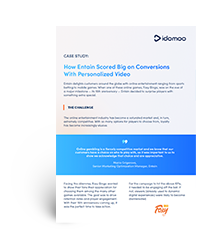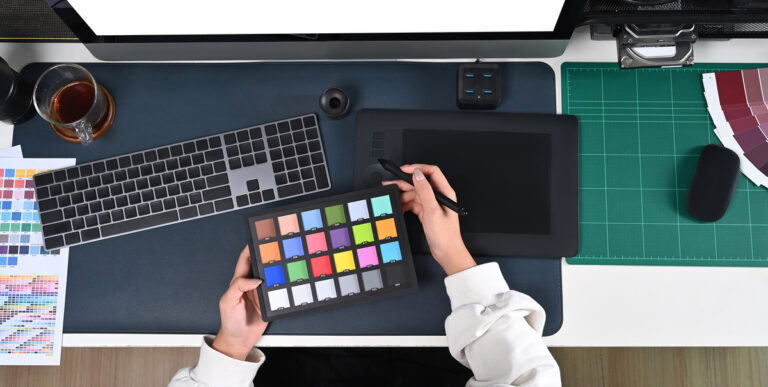A version of this article appeared on CMSWire. You can read it here.
Looking for the secret to a better, more customer-focused digital CX strategy? You’re not alone.
Brands are increasingly embracing digital customer experiences across the customer journey. But there’s a serious gap between how effective brands think these experiences are and how effective they are according to the customer’s perception.
According to one recent study, while 53% of brands believe that their customers are satisfied with their digital self-service tools, only 15% of customers agree. In another report, PWC found that 54% of consumers believe CX in most companies needs improvement.
Given all this investment poured into digital transformation, especially to create a better customer experience, what isn’t working? Why are both customer satisfaction and ROI suffering?
Like most solutions, we have to look first at the problem.
The Issue With Today’s Digital CX Strategy
Post on
Your digital CX should be more than an alternative to in-person interactions — it should be better, faster and smarter. After all, why shouldn’t it be? It’s powered by massive computational resources and advanced machine learning and AI that far outperform any one person’s capabilities to respond to customer needs or manage a customer interaction. And yet, customers are clearly discontented with the quality of these interactions.
Consumers have not been shy in telling us what specifically they’re unhappy about:
- Digital experiences are often clunky, time-consuming and cumbersome. The tech isn’t helping: 43% of professionals say complex CX technology is hurting the customer experience. When it comes to self-service, for example, 81% of consumers want more options, but only 15% are happy with current tools.
- Brands aren’t human anymore. Two thirds of consumers believe brands have lost their human touch, and nearly a third would leave the brand after one bad experience.
- Personalisation is often lacking. McKinsey & Company personalised
If you have customer feedback surveys, take a good look at them to see if they align with the issues cited above. What is your customer base missing in their digital experience? How is it affecting profitability, especially customer retention?
The good news is it’s possible for companies to tackle these issues and put customers back at the center of CX — where they belong. And because so few companies are getting it right, for those with a strong CX strategy, it’s a true competitive advantage, a differentiator that drives customer loyalty and supports business goals.
All it takes is access to the right tools and a truly customer-centric approach. Here’s how to do it.
Streamline Your CX for the Entire Customer Journey
If there’s one rule to giving your customer a positive experience, it’s this: don’t waste their time. Maybe that sounds obvious, but it happens more than you’d think.
While tech stacks are getting more complex, simple processes are still full of friction. Think of repeating your name and personal information every time one service rep hands you to the next or being asked for details you already entered into the system. It doesn’t matter how flashy the customer experience is — if you’re missing the basics the end result will be a poor customer experience filled with jarring pain points that ultimately lead to, you guessed it, churn.
The solution to clunky user experience differs depending on the specific situation. For larger enterprises, the issue often stems from using a broad set of technological platforms added over the years that don’t always play nice with each other. The massive IT investments often required to migrate to a more streamlined tech stack are hard to justify with any straightforward ROI calculation, so instead the tech stack just keeps growing and becoming ever more complex.
For these companies, adding a customer experience management platform may be the best path forward. While it may sound counterintuitive to add yet another solution to the stack in order to reduce complexity, these platforms are aimed at optimising orchestration across channels and customer touchpoints and are often the best step towards a cohesive customer experience strategy.
However, for smaller companies the solution may actually be the opposite: Strip unnecessary technologies from your tech stack. As any marketer knows, automation isn’t fully automated and each added tech solution multiplies the complexity and therefore the orchestration issues you’ll encounter. Ask yourself — do you truly need every tech you’re using? Have they all delivered the value you thought they would? Alternatively, could you perhaps move some activities into more horizontal platforms that make orchestration slightly less complex?
Whatever the solution, aim to reduce friction by making cross-channel communications seamless. Today’s customers are on a variety of channels, from email to social media to mobile apps — and your omnichannel approach should reflect that.
Another way to be customer-centric? Make sure you’re not overwhelming customers with long blocks of text no one will read. Communication should be clear and simple. Talk to people like they’re… well, people. Which leads me to the next point.
Add Back the Human Touch With Video
When you meet someone face-to-face, it’s immersive, visual and real-time. Online? Not so much. But consumers still want an experience that feels real, that treats them like humans.
So how can brands meet this need? Research shows that 93% of communication is non-verbal. And we know audiovisuals are processed faster than text — in the same part of the brain where we process emotions. The takeaway is that video is the most effective and empathetic human-to-digital interface. It’s the hack to humanising your brand, not just a tool for slick digital marketing.
Take a complex industry like insurance, where we do a lot of work. Sure, you can give your new customers pages of text (that they won’t read) or even an email (that they still won’t read), but an onboarding video, personalised for them, covers what they need to know in a way that’s clear, concise, even friendly.
Watch the SelectHealth onboarding video below and you’ll see what I mean.
Video is especially helpful for customer service, answering questions proactively and personalising, easing the burden on your customer support team.
And consumers are telling us video is what they want. New research shows 62% of consumers want more video from brands. (That’s trending up. It’s even higher for Gen Z with nearly 8 out of 10 zoomers saying they want more video content from brands.)
Use video across your customer journey. Onboard new customers, manage their service requests, or drive sales using the most effective interface, that also happens to be the interface consumers desire most — or maybe you thought that TikTok was a fluke?
Tip: Don’t forget video can be interactive, too. As you might expect, this boosts customer engagement, but it also enriches your first-party data, helping you learn more about your customers so you can serve them better later on. A win-win for everyone.
Make It Personal
Today’s consumers want online experiences to be relevant and personal. And businesses that excel at personalisation generate 40% more revenues than those that don’t.
Personalisation may sound daunting — but it doesn’t always have to be. Start with what you know, even if it’s just their first name, and build from there. As you grow your first-party customer data and get more comfortable, you can expand your personalisation efforts.
In today’s competitive landscape, the customer expectation is that all touchpoints across the customer journey will be fully personalised. Examples include but are not limited to:
- Onboarding: Greet new customers in a personal way to start the relationship off on the right foot. Take the opportunity to provide helpful advice that you know new customers could use.
- Self-serve: Self-serve can be a win-win but often ends up being a lose-lose. Ensuring that the experience is personalised to the customer segment, region, device or other items goes a long way to changing that.
- Upselling: A generic hard sell isn’t the way to win over your customers. A soft, contextual sell personalised to past purchases, existing services or key contract points is both relevant and relatable.
You can combine video with personalisation to deliver a more effective experience that aligns with what customers want. What does that look like? Here’s one example that shows it in action.
Ready for a Great Customer Experience?
New technologies will keep popping up, some of them good, others not so much. Virtually all of them will contribute to an already complex tech stack and roadmap. Few will help solve the three key challenges mentioned in this article. That’s part of the reason it’s critical to be selective about the digital CX strategy initiatives you take on.
The more digital and “at scale” our operations are, the less human and personalised they could become. But with the right choices, that doesn’t have to happen.
Prioritise technologies that help streamline CX and make it more personal and human. Make sure you’re benchmarking and using clear metrics, such as NPS surveys, customer retention rate and other top KPIs, to gauge your improvement. But most importantly, always keep the customer first — is this an experience the customer wants? And is it available when, where and how the customer wants it? It turns out that the secret to a good customer experience is the customer themselves.
We’ve done a lot of work with CX teams using video to optimise their customer experience strategy. Curious to learn more? Let’s talk.





